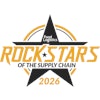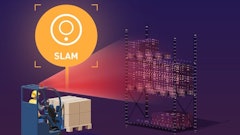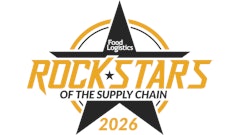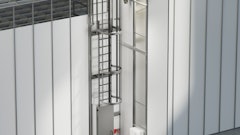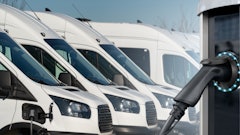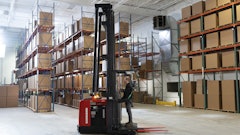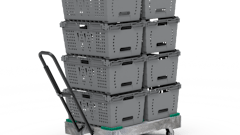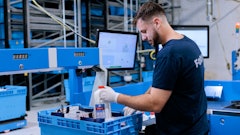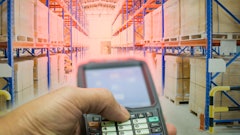Many European distribution centers are technologically more advanced than their U.S. counterparts—and with good reason. Lack of available land and a labor shortage have forced European companies to become creative in designing and automating their DCs. Here's an inside look at a pharmaceuticals warehouse in Belgium..
GLAXO SMITH KLEIN (GSK), Aalst, Belgium.Equipment: Pick-to-light; RF network with 15 mobile data terminals; automated box-closing machines; fully automatic conveyor system; weighing scales; drop-to-light scanning. Systems Integrator: Inther Integrated Systems, Cary, IL.
When Glaxo Wellcome and Smith Kline Beecham merged in 2000, combining two Belgium distribution centers gave the company a headache that all the pain relief tablets in the world couldn't cure.
GSK, with headquarters in the United Kingdom and United States, is a world leader in healthcare and pharmaceuticals. The company has more than 100,000 employees globally and operations in more than 180 markets around the world. Europe is its second largest.
As a result of the merger, GSK decided to expand its distribution center in Aalst, a city north of Brussels. The facility supplies about 300 hospitals, 50 wholesalers and 200 pharmacies throughout Belgium, Luxemburg and the Netherlands with health and beauty care products and over-the-counter and prescription drugs.
Before the merger, each company ran its own DC, but neither facility was large enough to support the combined product lines, consisting of more than 10,000 SKUs. About 35 percent of the products had to be stored elsewhere. "After the merger, our annual throughput increased from 20 million to 36 million items," says Rony de Bom, GSK's logistics manager.
GKS faced other challenges as well. With the significant increase in items, order accuracy became an important concern. And, the company had to deal with two different enterprise systems—Glaxo was using SAP and a paper-based system while Smith Kline was using J.D. Edwards. And, because it distributes products to different countries, the same products had different packaging to accommodate two languages: Flemish for distribution to northern Belgium and French for the southern parts of Belgium and Luxemburg.
Plus, typical issues for any pharmaceutical distributor—lot control, drug delivery, controlled-substance security areas and different temperature zones—had to be taken into account and integrated into the new system.
To handle the increased throughput, GSK built an 88,000-square-foot warehouse adjacent to its Aalst facility, which was completed in 2002. At that time, the company upgraded to SAP version 6.0 and rolled out SAP's warehouse management module, LES (Logistics Execution System), which supports RF data collection. It also implemented a logistics automation suite from Inther to control all warehouse processes, including pick-to-light systems, radio frequency, conveyors volume calculation, weight checking and automatic box closing.
The pick-to-light system handles more than 900 fast-moving items and 10,000 slow movers and bulk items are commissioned by RF.
Here's how it works: Pallets are barcoded and scanned at the receiving dock. The WMS allocates storage to a forklift driver and the pallets are put away in the corresponding storage zone for fast, medium or slow movers in the high bay warehouse. Inside the warehouse, every item has a dynamic floor position that is used for case picking and pick-to-light replenishment.
Once orders are transmitted to the SAP LES server, they are assigned to the Inther system and move into either the Belgium-Luxemburg system or the Dutch system. Since the system needed to account for different package sizes and languages for the same products, the pick-to-light, check weighing, box closing and sorting stations were split into two separate areas. The Belgium-Luxemburg system has a capacity of 440 items and the Dutch system can hold up to 350 items.
Each pick-to-light area is split into four different zones, with one operator per zone. SAP determines how each order will be split up and also assigns the contents for each box. A label, acting as a license plate, is printed at the beginning of the first zone. That label contains an internal barcoded order and delivery number, as well as an external barcode used for transportation purposes. A fixed scanner is installed at the beginning of each zone.
The pick-to-light system directs the order pickers to place items in the boxes. When the order is complete in that zone, it is then placed on the conveyor and moves to the next zones until everything needed is picked. Once the order is thoroughly completed, the box moves to the box-sealing machine.
The boxes are then moved by conveyor via trolleys equipped with RF scanners and printers. All cartons are checked against weights calculated by SAP and those that don't meet weight specifications are redirected to a reject station.
A picker stacks the cases onto a pallet and labels it with an internal barcode that identifies the order and also directs the conveyor paths to the mixed carton or consolidation lanes, where overhead scanners determine the final outcome. Dispatch takes place at two different shipping doors—one for Belgium and Luxemburg and the other for the Netherlands.
Today, the facility easily handles more than 36 million items each year and has been able to reduce direct picking staff by 20 percent. And GSK has been able to achieve an order accuracy rate of 99.99 percent—that's one less headache the company has to deal with.

